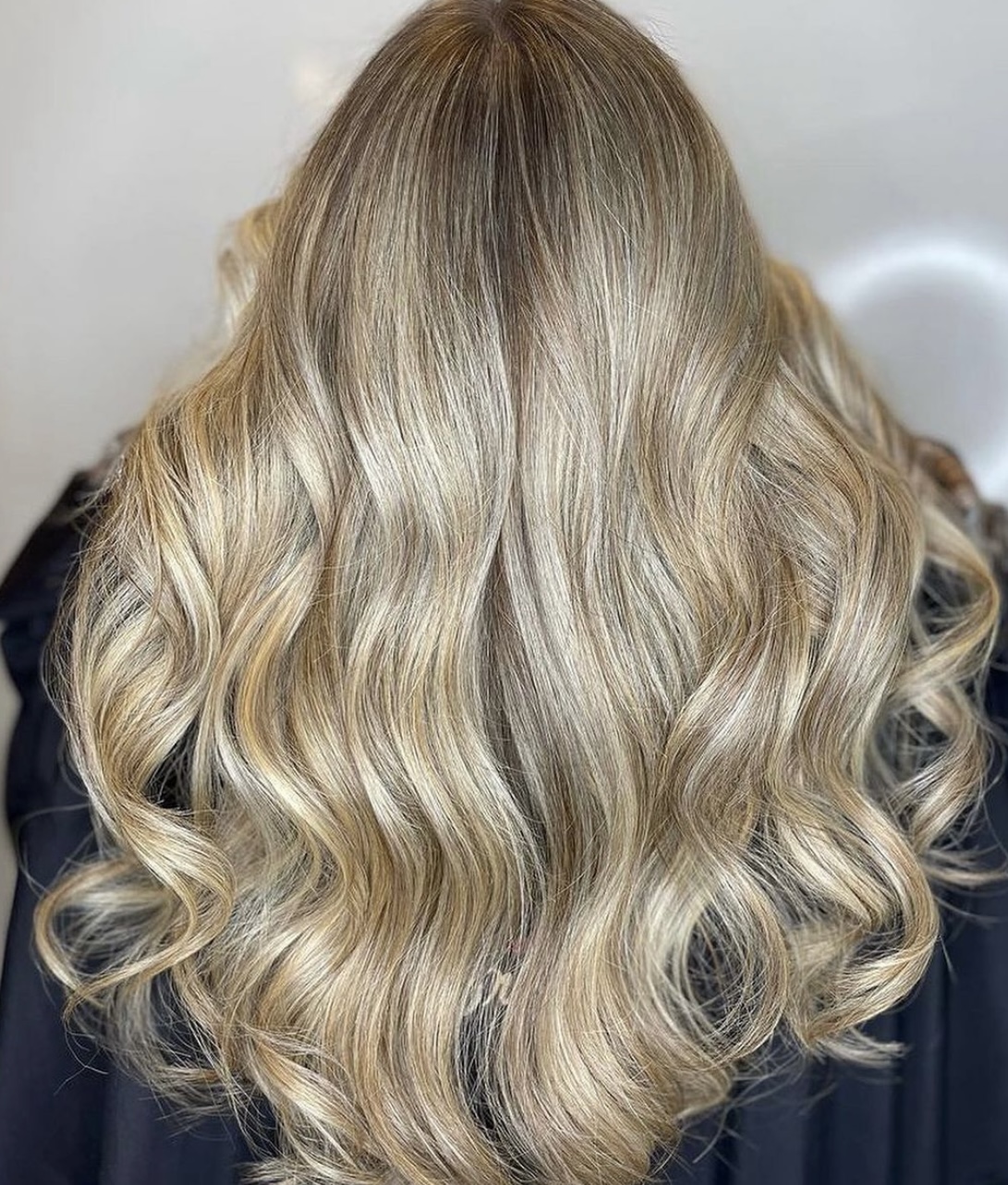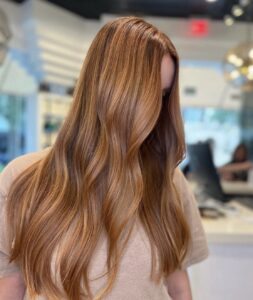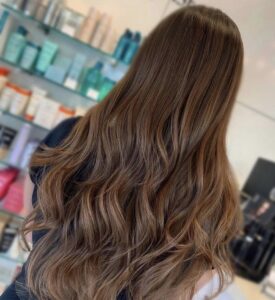
How Often Should I go to Hair Salon to Color My Hair?
How Often Should I go to Hair Salon to Color My Hair?
Hair coloring is a modern trend that takes hold of people as they strive to either change or mask gray roots. On the other hand, coloring frequency poses some uncertainties regarding their health, especially in terms of effects on hair and general well-being.
How often is it safe to color your hair?
Safety of routine hair dyeing occurs as one is in the pursuit of beauty and self-representation. Given the abundant existing products, it is also important to understand what over-coloration could lead to and how one can keep their hair healthy while enjoying this pursuit.
Importance of Hair Health:
Hair care is more than a physical beauty aspect as it reflects healthiness or wealth. The quality of your hair shows that you have taken good nutrition, hydration, and care. If the hair is completely devoid of any vitamins, or if there has been too much damage done from chemical product offerings such as those often used in coloring techniques.
The constant use of these color strips daily takes away all the natural oils and proteins from hair. These oils and proteins are good for keeping the hair moisturized, smooth, and pliable. The lack of them makes the hair dry and brittle, leading to breakage. Chronic episodes reduce the promise of structural consistency in follicles and deteriorate overall wellness.
Several factors specify the interval coloring. In order to develop a proper coloring schedule that takes into account the demand and well-being of hair, it is important to know these variables.
- Hair Type and Texture: Color treatments affect different hair types and textures differently. The main difference is that coarse, thick hair has a better tolerance to coloring than fine hair. Understanding your hair type gives you access to well-suited products and treatments.
- Current Color and Desired Shade: However, the rate of coloring hair varies significantly with respect to the hair’s current shade and ideal color. The deeper the tone, the more touch-ups are necessary as they get closer to that dark edge. However, a change to the darker shade could need fewer retouches.
- Products Used: The type of product also influences hair quality and color endurance in this process. The use of quality ammonia-free colors and rejuvenating treatments allows reducing damage while prolonging hair health.
- Hair Growth Rate: It also depends on the rate of your hair growth to know how often you should color roots for a balanced appearance. Hair grows faster. Thus, touch-ups have to be made more often, but lower hair growth rates with slow time can give longer intervals between color applications.
- Hair Care Routine: The healthy and shining color will depend on how you manipulate the hair. Through the use of color-safe shampoos and conditioners, avoiding hair styling with heat, and weekly deep treatment between services, you will also prevent premature fading.
Taking all these factors into account in one package, people can develop a hair coloring approach that will satisfy aesthetic goals and lead to a healthy scalp. Using a stylist or colorist, you can build your color plan that will always be right when done around without sacrificing yourself.
Chemical Exposure:
● The regular content may contain ammonia and hydrogen peroxide, which allow the dye to penetrate the hair shaft, changing its original color. Even though these chemicals help change hair color, they may significantly jeopardize scalp health and the overall welfare of your hair.
● Permanent colors are a trick that works like an alkali to high hair cuticles, which allows the penetration of dye. Alternatively, it is very frustrating and may result in scalp irritation or redness among individuals with delicate skin. On the other hand, prolonged inhalation of ammonia leads to allergic reactions that may manifest as erythema and itching or dermatitis if exposed extensively.
● The second commonly used product in the formulation of hair dye is Hydrogen peroxide, which acts as a developer and oxidizes melanin, or pigment-producing natural color. A good bleaching powder, hydrogen peroxide, affects the structure of hair, making it overly vulnerable to damage and moisture loss. Such chemical exposure can cause the hair to lose its natural oil composition, leading to dryness, which causes weakening and premature snapping.
Hair Damage and Breakage:
● Color treatments greatly contribute to hair fiber stress and hence decrease their structural integrity as well as flexibility. These chemical procedures during the dying will result in damage and even loss of hair for a few years.
● Large crowds may distort the cuticle or outer sheath of such hair. The outermost layer is called the cuticle, which covers and protects other inner layers of the hair shaft. Nevertheless, chronic exposure to excessive chemicals can undermine this safety wall and lead to hair damage arising from other environmental factors like stylization or mechanical stress.
Recommendations for Safe Hair Coloring Frequency:
How often you ought to dye your hair depends on the health and condition of each strand. Safe steps can help reduce the damage and maintain your color in days to come.
Consultation with a Professional:
● However, before undertaking such a hair coloring program, one should consult with an experienced hair stylist or colorist. With enough knowledge and technical know-how, these experts can determine your current hair status. With the help of comprehensive consultation, they can focus on elements like hair condition and type, elasticity level, and previously used chemical treatment.
● Professional consultation involves an individual approach to the process of hair dyeing. A good stylist will match appropriate products to the needs of your hair – including solutions for problems- so that you end up with a proper look. Moreover, they can recommend a coloring arrangement that will be balanced with your hair’s preference of appearance and condition.
● By consulting with a professional, they can get additional info on the pros and cons of different coloring options. Their knowledge of the same will, therefore, help you to color your hair through a safe route and be careful in taking care of it.
Using Gentle, Ammonia-Free Products:
● In order to prevent chemical harm caused to the head, a person should opt for hair dyes and other products that are less potent. In everyday hair dyes, ammonia is the detangling agent that can be used to open the cuticles for color absorption.
● On the other hand, natural oils and proteins that are stripped off make hair brittle because of ammonia and harshness. Opting for ammonia-free formulations can reduce risks and ensure healthy hair.
● Furthermore, choosing organic components helps your hair and skin. Hair receives benefits from botanical extracts, vitamins, and antioxidants that hydrate as a result, giving the hair strength. The compositions are likely to be mild and, consequently, unlikely to cause any discomfort or toxicity, hence appropriate for individuals suffering from advanced dermatology disease.
● You can help strands protect their health and vitality by using mild, non-ammonia types of hair colorants as part of your treatment procedures. With safe and healthy products, you can have beautiful color without having to sacrifice damage-free hair.
Alternatives to Frequent Hair Coloring: 
Despite the fact that permanent effects are caused by constant hair dyeing, other methods make it convenient and easy to apply them and ensure minimal needs for periodic retouching. The analysis of these options gives people an opportunity to try a lot of hairstyles without incurring permanent harm.
Temporary Hair Dyes:
● Products like the temporary hair dyes discussed above are helpful for those who seek additional interpretations about permanent colorations. These types of dyes are normally available as rinses, sprays, and quick formulas that only cover the outer section of the epidermis shafts without penetrating.
● In the case of temporary hair dives, people obtain both coverage and color enhancement without having to keep a certain shade all the time. Owing to progressive bleaching with each washing, they provide a wide range of color variants or return hair to nature without any restrictions.
● In addition, temporary hair dyes are rather less toxic to the roots because they mainly consist of milder components and need practically no chemical processing. This reduces the risks of damage and allows people to maintain healthier hair despite intermittent color changes.
Conclusion
To begin, a number of factors significantly affect the frequency with which one carries out safe hair coloring practices, including preferences and lifestyle. Due to the given aesthetic effect, though consistent coloring is observed, hair health should be considered along with a custom that limits damage.





